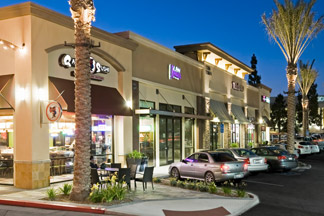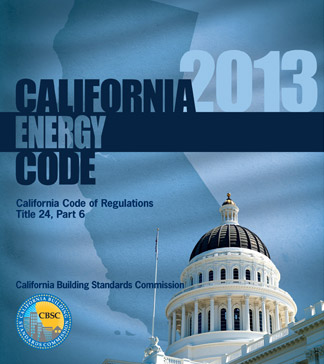 We understand that everyone’s favorite thing to do is read up on more legislative updates, but staying up-to-date is a must! Focusing on the impact the new standards will have on existing commercial buildings, we have summarized the latest update to California’s Building Energy Efficiency Standards (Title 24, Part 6) below. The updates went into effect July 1, 2014.
We understand that everyone’s favorite thing to do is read up on more legislative updates, but staying up-to-date is a must! Focusing on the impact the new standards will have on existing commercial buildings, we have summarized the latest update to California’s Building Energy Efficiency Standards (Title 24, Part 6) below. The updates went into effect July 1, 2014.
The new standards update codes for lighting, space heating and cooling, ventilation, and water heating, calling for the following in commercial buildings (per CA.gov website: http://tinyurl.com/oj6xnvb):
- High performance windows that reduce heating and cooling loads in buildings year round;
- Efficient process equipment in grocery stores, commercial kitchens, data centers, laboratories, and parking garages;
- Advanced multi-level lighting controls and sensors to minimize the usage of electric lighting by taking advantage of available daylighting and demand response opportunities;
- Occupant Controlled Smart Thermostats allow for setting and maintaining a desired temperature and voluntarily participation in a utility’s demand response programs;
- Increased solar reflectance for low-sloped roof to reduce cooling load in summer time;
- Increased cooling tower energy efficiency and water savings by requiring drift eliminators and other water saving measures.
 As reported by Buildings.com, the majority of the updates affecting existing commercial buildings focus on lighting requirements and controls. The article, 5 Lighting Updates in California’s Title 24 (excerpts below) highlights items to be used as the basis for a better understanding of how the revisions could affect your existing property.
As reported by Buildings.com, the majority of the updates affecting existing commercial buildings focus on lighting requirements and controls. The article, 5 Lighting Updates in California’s Title 24 (excerpts below) highlights items to be used as the basis for a better understanding of how the revisions could affect your existing property.
1) COMPLIANCE THRESHOLD:
Previous versions of Title 24 required lighting alterations to comply with the most recent standards when 50% of the luminaires were replaced. That number drops to just 10% of the luminaires in the new version, consistent with changes to ASHRAE 90.1-2010.
However, if you’re only changing out lamps and ballasts, your project may be classified as a luminaire modification-in-place, according to Owen Howlett, specialist for the California Energy Commission, the state’s energy policy and planning agency. In that case, the trigger for compliance is 40 luminaires.
“For projects in which more than 40 luminaires are altered, the altered luminaires must have multi-level control if applicable, and the space as a whole must have most or all of the lighting controls that are required for new construction projects,” explains Howlett.
2) MULTI-LEVEL CONTROLS
The requirements for controls have increased in granularity, now requiring either continuous dimming or three intermediate levels between on and off settings (the previous requirement was one intermediate level).
In addition to these changes, luminaires mounted at less than 24 feet over most hardscape areas will have to include bi-level control and dim when no one is present, a new requirement, says Howlett.
“The new requirement ensures that building occupants and operators have access to both controlled and uncontrolled outlets in certain space types. We anticipate people will use the controlled outlets for computer monitors, cellphone chargers, fan heaters, and other appliances that can be switched off at night without adverse consequences,” explains Howlett.
3) DAYLIGHTING
The latest version of Title 24 expands the requirements for photocontrols in daylit spaces, such as parking garages. Also new in this version, the standards now include prescriptive daylighting requirements for secondary daylit zones. The photocontrols now required for the secondary space must have the same level of functionality as those in the primary zone, and the two zones must be controlled separately, Howlett explains.
4) DEMAND RESPONSE
In addition to the demand response capabilities required for multi-level controls, Title 24 now mandates automatic demand response capabilities for lighting systems in all (new) commercial buildings larger than 10,000 square feet, regardless of space type. The previous version only required demand response capability for retail buildings with sales floors larger than 50,000 square feet.
The significant changes to the Building and Standards code are the first update since California’s energy agencies agreed upon a Zero-Net Energy goal, which states that new nonresidential buildings will achieve a Zero-Net Energy goal by 2030.
For additional information, download the Quick Solutions Guide for CAL TITLE 24.
*Please note that Coreland Companies has summarized these changes for the convenience of our clients. It is not intended as an interpretation of the California Energy Commission’s regulations. Please visit http://www.energy.ca.gov/ for the full language of the adopted changes.

